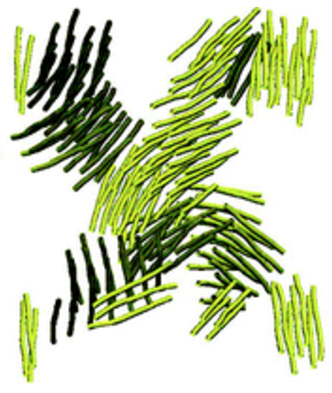Abstract
Theoretical and computational studies of polymer nanocomposites have largely focused on spherical inclusions in a polymer matrix. In order to address the influence of particle shape on nanocomposite behavior, extensive Monte Carlo and molecular dynamics simulations are used to examine the structure and deformation behavior of a model polymer upon addition of rods of varying aspect ratios. It is found that, at constant temperature, nanorod length does not meaningfully affect the elastic properties of composites but does affect postyield properties, such as the strain hardening modulus. In contrast, at constant T/Tg, several trends with additive length arise. Examination of the polymer bond autocorrelation function during deformation reveals that longer, dispersed rods induce a broadening of the relaxation spectrum. Nanocomposites show longer bond orientation relaxation times than the pure polymer during all stages of deformation. For the truly nanoscale additives used in this study, polymer mobility is found to be only a weak function of distance to the nearest nanorod so long as the additives did not aggregate.
